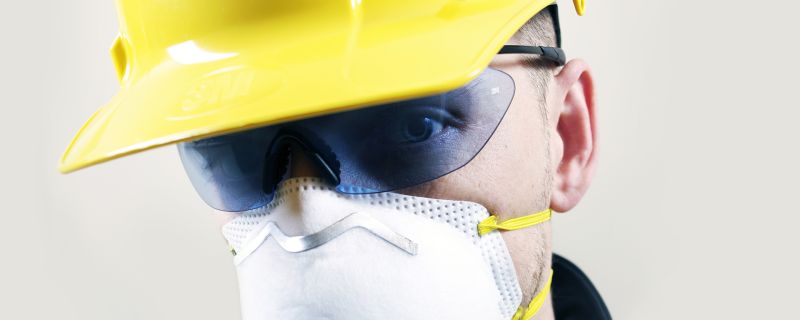
- Claims & Risk Management
- No comments
On March 25, 2016, OSHA issued a final rule updating the eye and face protection standard. The final rule updates references to the most recent eye and face protection standards issued by the American National Standards Institute (ANSI).
The final rule also harmonizes eye and face protection standards for the construction industry with the standards for the general and maritime industries.
The final rule becomes effective April 25, 2016.
Action Plan for Eye and Face Protection
Employers should review this final rule and make sure that their employee eye and face protection equipment meets ANSI Z87.1-2010, ANSI Z87.1-2003 or ANSI Z87.1-1989 (R-1998) requirements.
Employers are not obligated to upgrade or replace current eye and face protection equipment to comply with the standard.
Employers in states with an OSHA-approved plan should also monitor whether their state plan will adopt the federal standards for their state, or whether more stringent standards will be adopted as a result of this rulemaking.
The Final Rule
The changes prescribed by the final rule involve “incorporation by reference” of the latest ANSI standard—Z87.1-2010 (Occupational and Educational Eye and Face Protection Devices). ANSI Z87.1-2010 sets requirements for the selection, testing, use and maintenance of eye and face protectors. These protectors are a safeguard against many hazards, including impact, non-ionizing radiation and chemical exposure.
The changes also remove the old ANSI (Z87.1-1989) version of the same standard as the norm for eye and face protection but retain ANSI Z87.1-2003 and ANSI Z87.1-1989 (R-1998) by reference as alternative means of compliance with OSHA’s eye and face protection requirements.
Employers can obtain the ANSI/ISEA 2010, ANSI 2003 and 1989 (R-1998) versions of the Z87.1 standard from ANSI. This information comes in the form of a package and costs $57. The package is also available through IHS Standards and Techstreet stores.
Finally, the final rule indicates that employers may rely on a manufacturer’s representation that eye and face protection products are in compliance with OSHA standards. Therefore, employers are not obligated to upgrade or replace current eye and face protection equipment to comply with the standard.
General Industry and Maritime Industry Standards
The final rule incorporates ANSI Z87.1-2010 and eliminates Z87.1-1989 in the following regulations:
- 29 CFR 1910.133(b)(1);
- 29 CFR 1915.153(b)(1); and
- 29 CFR 1917.91(a)(1)(i).
OSHA implemented ANSI Z87.1-2010 because it believes that eye and face protection market practices already meet this standard. The final rule also updates the general incorporation by reference section and allows employers to use ANSI Z87.1-2010, ANSI Z87.1-2003 or ANSI Z87.1-1989 (R-1998) to comply with:
- 29 CFR 1910.6;
- 29 CFR 1915.5;
- 29 CFR 1917.3; and
- 29 CFR 1918.3
Construction Industry Standard
The final rule changes the ANSI standard references for the construction eye and face protection standard and harmonizes these changes with the general and maritime industry standards. Specifically, the final rule amends 29 CFR 1926.6 and 1926.102 and updates ANSI Z87.1-1968 to ANSI Z87.1-2010. The rule also allows employers to use ANSI Z87.1-2003 or ANSI Z87.1-1989 (R-1998) to comply with OSHA eye and face protection regulations.
In addition, the final rule includes language in the construction eye and face protection standard to make this standard nearly identical to the language used for the eye and face protection standard in the general and maritime industries. The language is only “nearly identical” because it retains certain provisions that are unique to the current construction standard. With these changes, it will be easier for employers to comply with all applicable OSHA eye and face protection regulations when more than one industry standard applies.
Implementation
Assuming employers already comply with the 2010, 2003 or the revised 1989 version of the ANSI standard, there are no compliance or economic burdens associated with this final rule. The final rule does not require employers that are in current compliance to replace or update protection devices solely to comply with the rule.
The final rule also allows employers to continue to follow the existing ANSI standards referenced or to follow the latest version of the same ANSI standard.
State Plans
Under OSHA regulations, states with an OSHA-approved state plan must adopt standards that are at least as effective as OSHA standards. This means that when an OSHA standard is amended and imposes more stringent requirements on employers, states must, within six months, either:
- Adopt the federal standard or a state standard that is at least as effective as the federal standard; or
- Show why adopting the federal standard is unnecessary under the state plan.
Because this final rule does not impose any additional or more stringent requirements on employers (when compared with the previous standard), states are not required to take either action mentioned above. However, OSHA encourages state plans to adopt the final rule’s amendments.
More Information
Contact our Risk Department for more information regarding OSHA standards by calling us at (610) 892-7688 or via our contact form.

